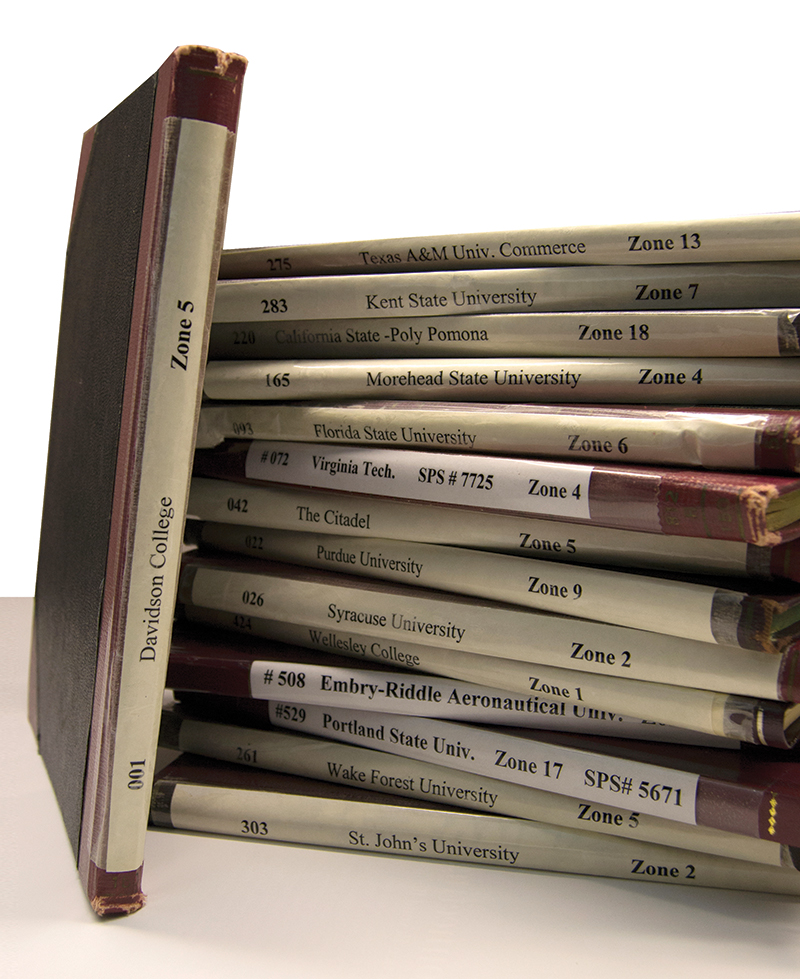Finding Historical Ties
Spring
2014
The Director's Space
Finding Historical Ties
Toni Sauncy
I first heard the story of Sigma Pi Sigma’s origins when I was inducted into the society as a student at Texas Tech University in Lubbock. I have retold the story countless times while presiding over induction ceremonies for my students and other students at campuses around the country. Telling the story puts the ceremony in context. It lets new inductees know that they are part of something bigger than their departments and campuses, something with strong historical ties.

The story starts with a handful of students who had a shared enthusiasm for physics. They founded the Sigma Pi Sigma fraternity in 1921 at Davidson College in North Carolina. Then, at a 1934 conference at Purdue University in Illinois, the founders realized that their fraternity should become a society. As a woman enthusiastic about physics, that part of the story holds personal significance for me.
Working in the Sigma Pi Sigma National Office has deepened my connection to that story. I have flipped through the national office’s copies of the Sigma Pi Sigma “Red Books,” the ledgers of member names. Every chapter has one Red Book. The habit of recording the name of every single inductee in those ledgers was started at the founding of the organization, and it continues today. But now the names are not penned as they once were but rather printed from a computer and affixed to the page. The full set of Red Books serves as a robust physics alumni list, a historical record of scholars who have excelled in physics and gone on to success in a wide variety of careers. The weighty volumes are shelved modestly—in numerical order by chapter—in a room full of outreach supplies where SPS summer interns turn innovative ideas into engaging activities for future physicists.
Visitors to the SPS National Office often ask if they can look for their names in the Red Books. The delight of locating a chapter record in the collection of over 550 books is superseded only by the joy that ensues when the seeking index finger of the curious visitor scrolls down the sometimes yellowed pages and successfully points to the name of its owner. The satisfaction felt at knowing that your name is counted within these volumes comes, I believe, from the verification that you are part of something bigger than yourself.
I have watched the historic films of Marsh White and seen the photos of the Davidson College inauguration of the society many times. I knew that the founders carefully designed the symbols associated with the honor society. But it wasn’t until the SPS National Office received a “lost” Sigma Pi Sigma key sent anonymously in the mail that I picked up the Davidson Red Book and let my own index finger do the perusing in the chapter record that started it all.1 I was curious to know the names of the first few Sigma Pi Sigma members. I began with inductee number one, scrolled down, and slowly realized that all of the inductees were men. Of course. Davidson was originally an all-male school; the first class of women matriculated in 1973.2
Curious, I wondered, “Who was the first female inductee listed in the Davidson chapter record?” I let my finger continue to pass over the dusty pages until I found her. To my delight the name belonged to a woman I know: Beth Ann Thacker, a Texas physics colleague and professor at my alma mater, Texas Tech University. Wow! Those historical ties can surprise you.
In April it was my great pleasure to visit Davidson and meet the newest members of the oldest Sigma Pi Sigma chapter to return the “lost key.” This ceremony at the original home of Sigma Pi Sigma provides a fitting centerpiece to this issue of Radiations, in which we look to the past with an eye on the future. I challenge our alumni to make new ties to nearby physics students. Provide those students with some context.
During a recent chapter visit, I spoke to a student about the importance of connecting with alums. The student said to me, “We need to see them and meet them and talk to them.” Ties to physicists who have already walked the paths that students walk today cannot be replaced by videos or even written stories. Let students know in person that they are part of something bigger that extends beyond their classes. The value of forming relationships between alumni and students is immeasurable; such relationships can provide transformative experiences for both parties.
You, the alumni members of our society, can be the secure links between the new inductees joining today and the rich history of Sigma Pi Sigma. You can be the historical ties between the past and the future—or, for some of us, the historical bows.
1 See p. 8 for the full story of the “lost key.”
2 “Active and Benevolent Ladies: A Short History of Women at Davidson College,” Davidson College Library, available online at http://library.davidson.edu/archives/women/.
